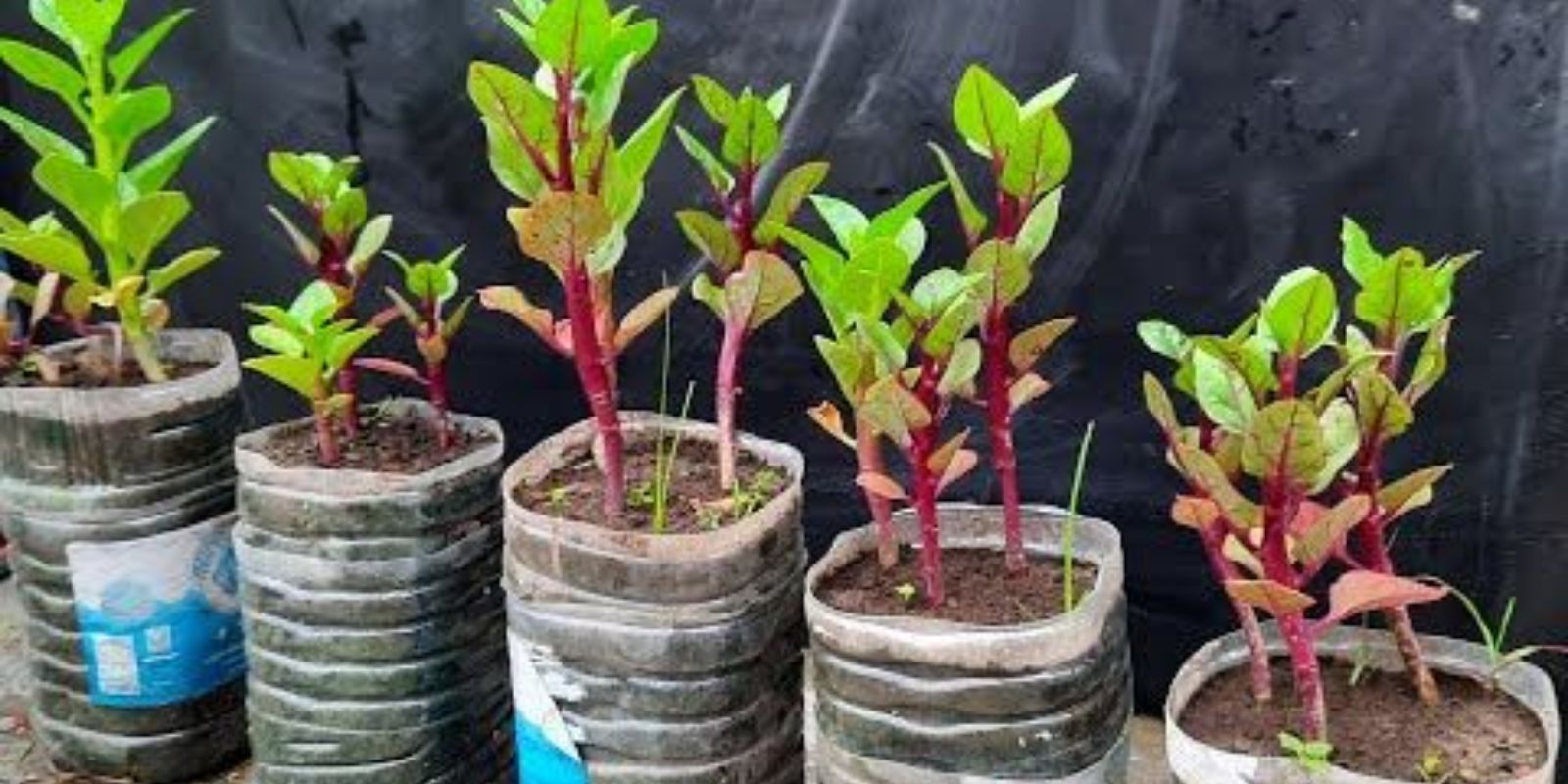Introduction
Malabar spinach, known for its rich nutritional profile and rapid growth, is a versatile leafy green that thrives in warm climates. What makes it even more exciting is the opportunity to grow this wonderful vine using recycled plastic containers. This eco-friendly approach not only reduces waste but also provides a cost-effective way to cultivate fresh, organic greens right at home. In this comprehensive guide, we’ll delve into how you can grow Malabar spinach using recycled plastic while promoting sustainability and creativity in your garden.
Why Choose Malabar Spinach?
Malabar spinach isn’t your ordinary leafy green. Unlike traditional spinach, it’s a tropical vine that thrives in heat and humidity. Its thick, glossy leaves are not only visually appealing but also packed with vitamins A, C, and iron. Whether used in salads, soups, or stir-fries, Malabar spinach is a nutritious and delicious addition to any meal.
Growing it in recycled plastic containers adds an extra layer of sustainability, turning what would be waste into a productive gardening tool.
Benefits of Recycling Plastic for Gardening
Recycling plastic containers to grow plants offers several advantages:
- Cost Savings: You can repurpose household items like bottles, buckets, and tubs.
- Eco-Friendly: Reduces plastic waste and its environmental impact.
- Space Efficiency: Perfect for urban gardeners with limited space.
- Customization: You can design and size containers to suit your plant’s needs.
Steps to Grow Malabar Spinach Using Recycled Plastic
1. Select the Right Plastic Container
Begin by choosing a suitable recycled container. Options include:
- Large plastic bottles (2-5 liters)
- Buckets or tubs
- Plastic storage bins
Ensure the container is clean and has enough depth (at least 8–12 inches) for root growth. Drill or cut drainage holes at the bottom to prevent waterlogging.
2. Prepare the Soil Mix
Malabar spinach thrives in nutrient-rich, well-draining soil. Prepare a mix using:
- 40% garden soil
- 30% compost or organic manure
- 30% coco peat or sand for drainage
This mix provides the necessary nutrients and moisture retention for healthy growth.
3. Sow the Seeds or Plant Cuttings
Malabar spinach can be grown from seeds or cuttings:
- Seeds: Soak seeds in water overnight to speed up germination. Sow them 1/2 inch deep in the prepared soil.
- Cuttings: Take 6–8 inch cuttings from a mature plant. Ensure they have 2–3 nodes. Plant them in the soil with the nodes buried.
Keep the container in a warm, sunny spot for germination and initial growth.
4. Place the Container in Full Sun
Malabar spinach loves sunlight. Place the container in an area that receives 6–8 hours of direct sunlight daily. If sunlight is limited, consider moving the container or using a grow light.
5. Water Regularly and Maintain Humidity
Consistent watering is crucial for Malabar spinach, as it thrives in moist conditions. However, avoid overwatering.
- Water when the top inch of soil feels dry.
- In hot climates, mist the plant to maintain humidity.
6. Add Support for Climbing Vines
Malabar spinach is a vigorous climber and requires support to grow vertically. Use:
- Trellises
- Bamboo sticks
- Strings tied to a wall or frame
Training the vines upward not only saves space but also enhances air circulation and makes harvesting easier.
7. Fertilize for Optimal Growth
Feed your plant every two weeks with a balanced fertilizer or organic alternatives like compost tea or diluted fish emulsion. This encourages lush foliage and a steady supply of leaves.
8. Harvest Regularly
Once the plant is established, start harvesting the leaves and tender stems. Regular harvesting promotes new growth and ensures a continuous supply of fresh greens.
Common Challenges and Solutions
- Pest Management
Malabar spinach may attract pests like aphids and caterpillars. Use organic solutions like neem oil or introduce beneficial insects such as ladybugs to control infestations. - Overwatering Issues
Ensure the container has proper drainage. Yellowing leaves may indicate overwatering. Adjust your watering schedule accordingly. - Limited Sunlight
If sunlight is inadequate, move the container to a brighter spot or supplement with artificial grow lights.
Creative Ideas for Recycling Plastic Containers
Recycling plastic isn’t just practical—it can be creative and fun! Here are a few ideas:
- Hanging Planters: Cut plastic bottles in half, add soil, and hang them using strings.
- Vertical Gardens: Attach multiple bottles to a wooden frame for a space-saving vertical setup.
- Self-Watering Pots: Create a reservoir at the base of the container for consistent moisture.
These DIY projects are not only eco-friendly but also visually appealing, adding a unique touch to your garden.
Health Benefits of Malabar Spinach
Growing Malabar spinach at home ensures a fresh and chemical-free supply of this superfood. It is:
- Rich in Iron: Supports red blood cell production.
- High in Antioxidants: Boosts immunity and fights oxidative stress.
- Great for Digestion: Packed with dietary fiber for gut health.
By incorporating Malabar spinach into your meals, you’re nourishing your body with essential vitamins and minerals.
Conclusion
Growing Malabar spinach in recycled plastic containers is an excellent way to combine gardening with sustainability. This versatile plant is easy to grow, highly nutritious, and thrives in compact spaces, making it perfect for urban gardeners. By following these simple steps and embracing creativity in recycling, you can enjoy fresh, homegrown greens while contributing to a healthier planet.
Call to Action:
Have you tried growing Malabar spinach in recycled containers? Share your tips, ideas, and pictures in the comments below to inspire others!
Viral Gardening Hashtags:
#GrowMalabarSpinach #EcoFriendlyGardening #RecycledGardens #UrbanGardening #DIYPlanters #SustainableLiving #GreenThumb #ContainerGardening #PlasticRecycling #HealthyEating

